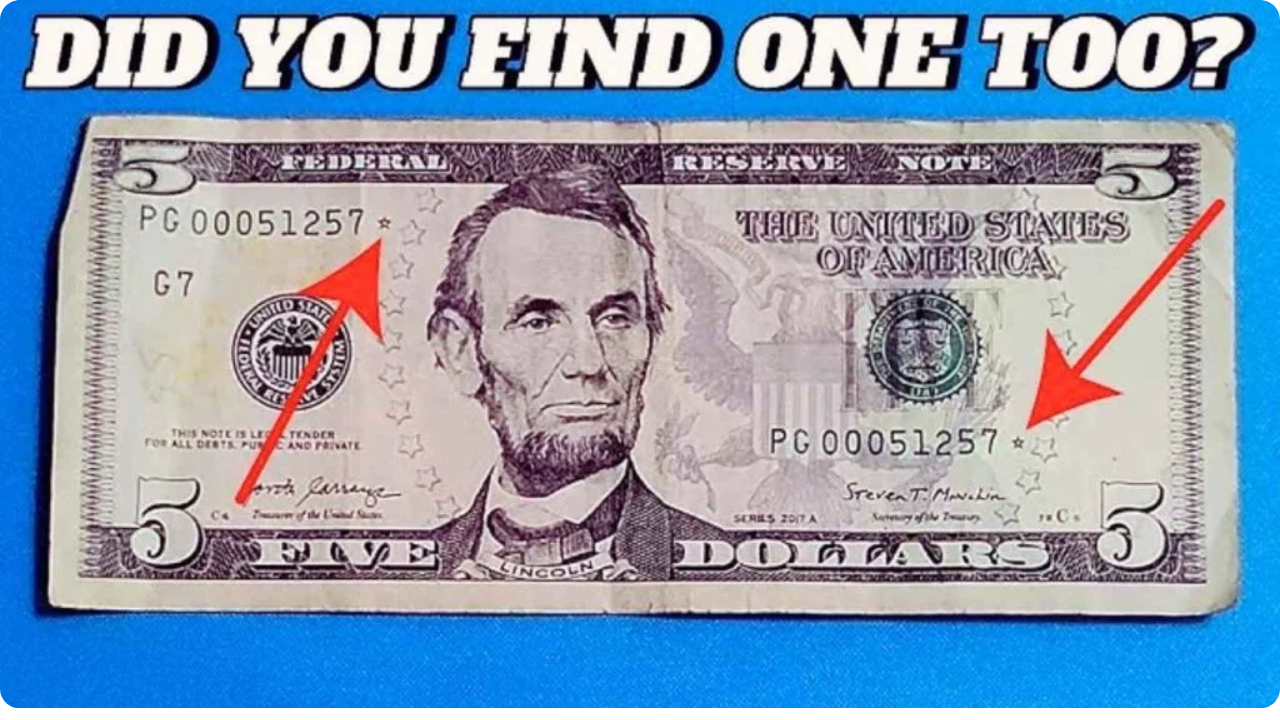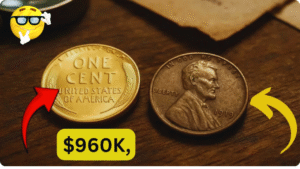Hey, money hunters! It’s 12:15 PM EST on Friday, August 22, 2025, and there’s a new treasure hunt sweeping the USA. A rare $5 bill with a star symbol recently sold for $60,000 at an auction, and it might be sitting in your wallet or drawer right now. These special “star notes,” used to replace damaged currency, are turning heads as collectors go wild. Let’s dive into why this bill could be your ticket to a big payout!
A Star Note Turns into a Windfall
The story kicked off when a guy from Texas found a $5 bill from the 2003 series while paying for coffee. He noticed a tiny star after the serial number and, on a whim, checked it online. Turns out, it was a rare replacement note with a low serial number—B12345678*—and in crisp, uncirculated condition. After getting it graded, it hit the auction block and sold for $60,000 last week. Who knew a coffee run could lead to a fortune?
What Makes It So Valuable?
These star notes are special because the U.S. Treasury prints them to swap out defective bills, marked with a star at the end of the serial number. The 2003 $5 series is already low in circulation, but a low serial number like this one, combined with perfect condition, makes it a collector’s dream. Only a handful are known with this exact sequence, driving the price to $60,000, though most star notes fetch $10 to $500 depending on rarity.
| Specifications | Details |
|---|---|
| Denomination | $5 |
| Series | 2003 |
| Serial Number | Starts with B, ends with * (e.g., B12345678*) |
| Material | 75% cotton, 25% linen |
| Size | 155.956mm x 66.294mm |
| Value Range | $10 – $60,000 (depending on condition/serial) |
How to Spot Your Own Star Bill
Got some cash lying around? Here’s how to check:
- Look for a star (*) after the serial number on the front.
- Check the series—2003 or other low-print-run years like 2013 or 2017.
- Note the serial number—low or repeated digits (e.g., 00000001) are gold.
- Hold it to the light—crisp, unwrinkled bills are worth more.
- Take it to a coin shop or appraiser if it looks promising.
With billions of bills in circulation, the odds are slim, but recent finds—like a $25,000 star note from a tip jar—have folks digging through wallets and old cash stashes. Banks and ATMs might even hold a gem, so keep your eyes peeled!
A Hobby That Pays Off
Collecting currency is heating up, especially with unique notes like this $5 star bill. It’s a piece of American history, showing how the Treasury fixes mistakes, and the low serial number adds a thrill. As the U.S. nears its 250th anniversary in 2026, interest in rare money is soaring, with auction houses seeing more submissions. It’s not just about cash—it’s about finding a story in your pocket!
Tips to Join the Hunt
- Check your wallet, piggy bank, or old cash envelopes.
- Ask family if they’ve saved bills from the early 2000s.
- Visit a bank or coin dealer for a free look if you spot a star.
- Look up online resources to learn more about serial numbers.
- Have fun—even small finds can add up!
Could You Be the Next Big Winner?
This Texas guy’s $60,000 score proves that a simple $5 bill can hide a fortune. While most star notes won’t reach that level, others have sold for hundreds, making it worth a quick check. So next time you’re paying for groceries or counting change, take a second look. Head to a local coin shop or auction site if you find a star with a low number—your big break might be waiting in your back pocket! Happy hunting!








